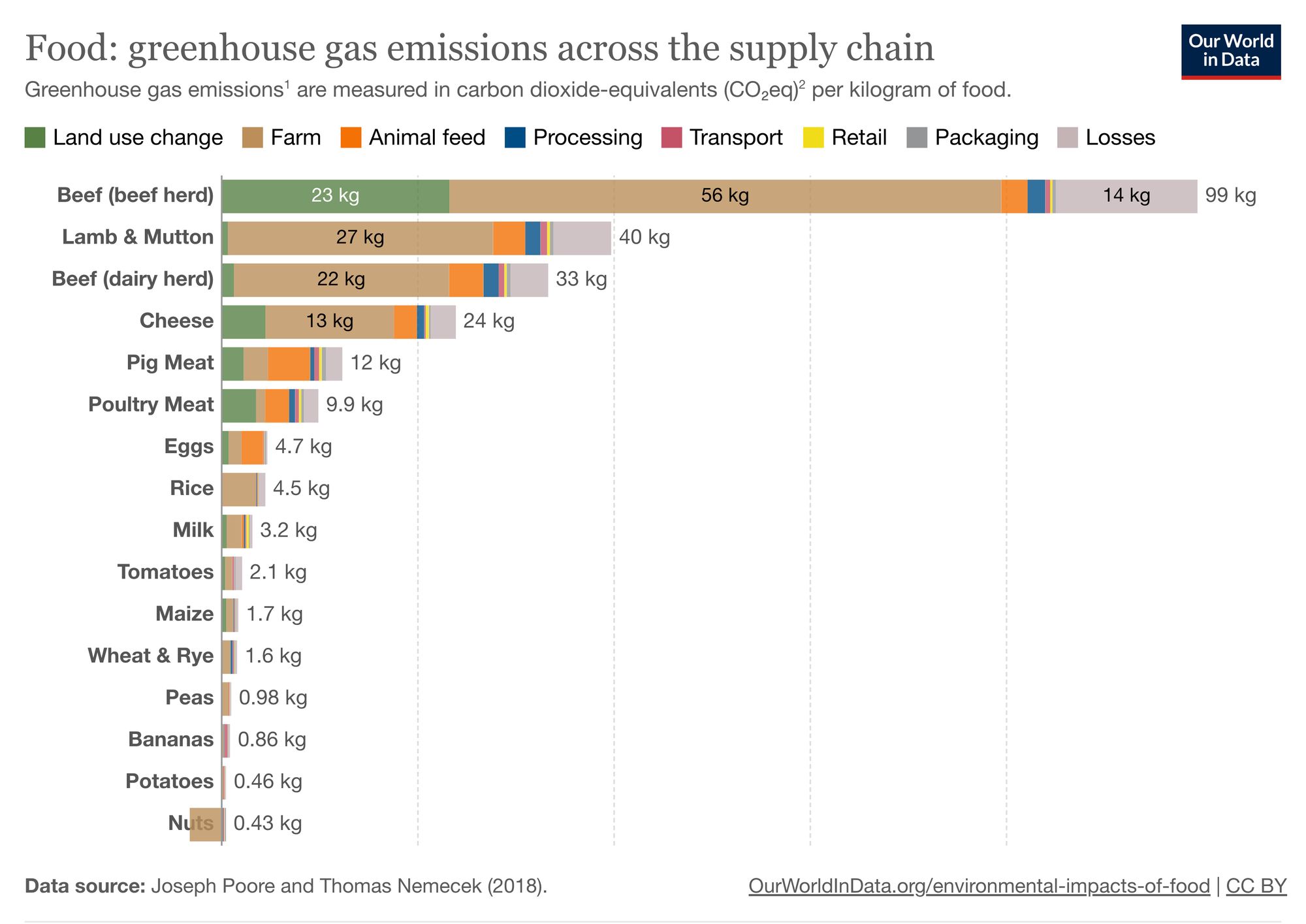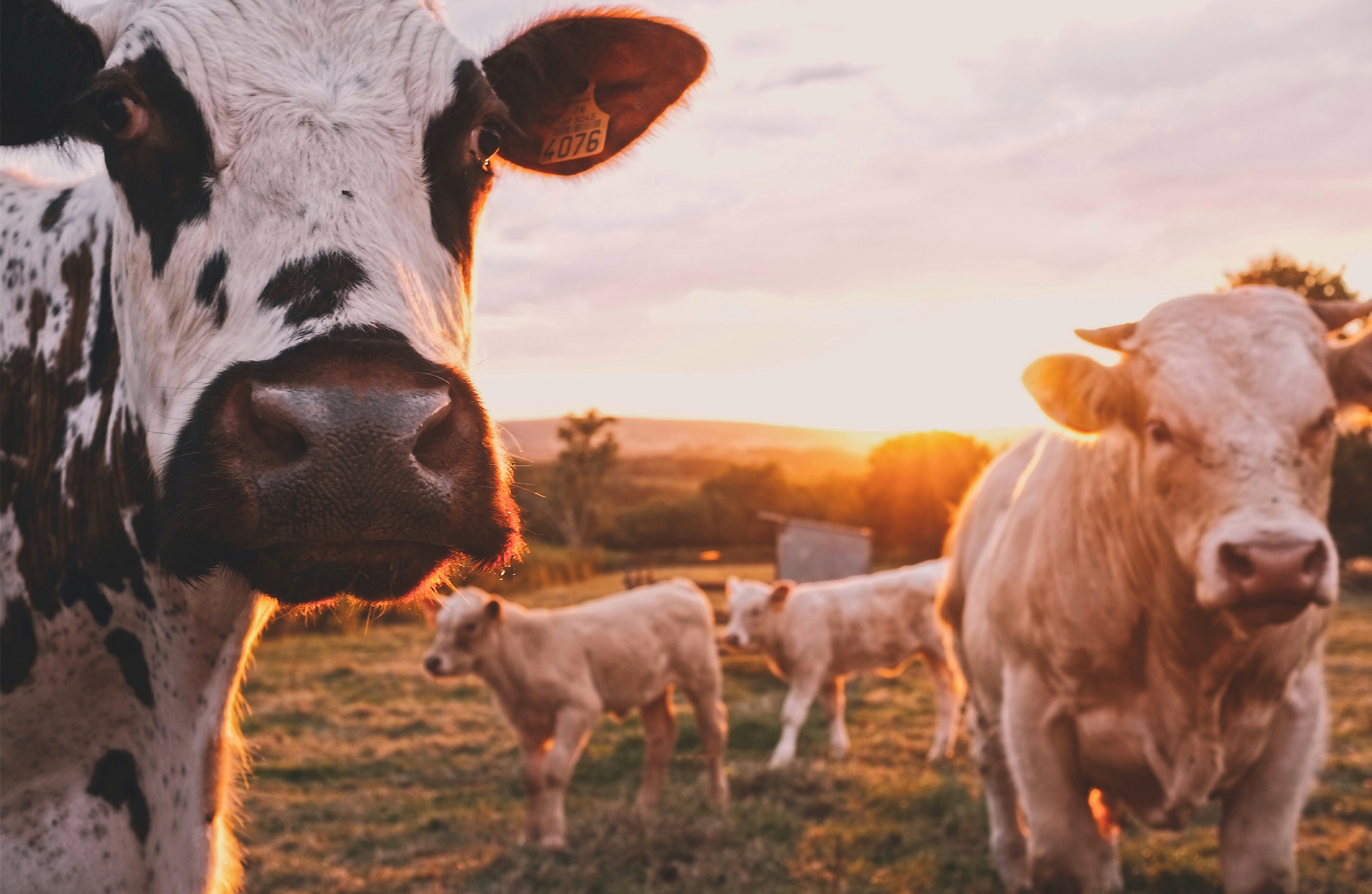Of the global emissions of greenhouse gases driving global warming, 24% are estimated to come from the production of the food we eat. Your food choices can have a substantial impact on global warming.
Your choices include not only the amount and types of food you eat, but how it’s produced and where it comes from.
To appreciate why those choices matter, let’s drill down into the emissions associated with each step in the production and delivery of food to your home. The figure below shows estimates of the carbon dioxide equivalent emissions, per kilogram of product, associated with land use change, farm operations (plowing, fertilizers, harvesting, emissions from animals), animal feed, processing, transport, retail, packaging, and waste.

The emissions for different foods differ greatly. Emissions from beef production are double that of any other food type because of the forests burned to expand the acreage needed for beef production and the methane emitted by the cattle.
Sorry chocolate fans, but emissions from chocolate production are large, too, mostly because of the forests burned to expand its production. But if you don’t eat a lot of chocolate, the impact will be small.
Emissions from lamb are high because of the high emissions of methane from sheep. The same goes for dairy products.
Emissions from nuts are negative because nut trees sequester carbon as they grow.
The figure does not distinguish the contribution of fertilizers from other farm operations. Nitrous oxide emissions from fertilizers comprise 4% of global emissions. Those emissions can be reduced by eating certified organic food (grown without synthetic fertilizers or pesticides).
Noteworthy is the negligible contribution of transportation to the emissions from food production. Most food is transported by train, truck, or ship, which are relatively efficient forms of transportation. Emissions from air transport, per kilogram per kilometer, are 47 times higher than by sea, so avoid products transported by air. Although food bought from local sources can be fresher, buying local has little effect on emissions unless the alternative is food transported from remote sources via aircraft.
Emissions from retail operations and packaging are also negligible. However, reducing packaging provides other benefits such as reduced landfill and environmental contamination, so buying food in bulk offers environmental as well as economic benefits. But be careful with buying in bulk, as buying perishable food in bulk will lead to food waste if too much is purchased. Bring your own containers and just buy what you will eat before it perishes.
Emissions from losses (food waste) are substantial for most foods. Losses occur during the production, distribution, and consumption of food. The ‘expiration date’ is rarely based on estimates of spoilage, so choose marked-down products near or past their expiration date and use them promptly. But be careful not to purchase more than you can consume before they actually go bad.
It’s clear from the chart that if you have been relying on beef for your protein, you can substantially reduce the greenhouse gas emissions associated with the food you eat by replacing beef with fish, poultry, and complementary plant-based protein sources such as beans and rice. In the future, beef with much smaller methane emissions might become available.
Climate scientist Steve Ghan eats no beef.


